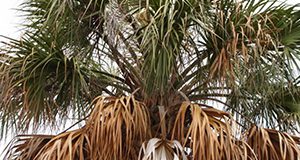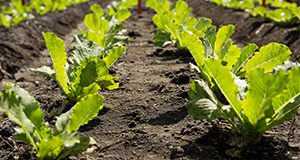This updated 4th edition of the Florida Citrus Rootstock Selection Guide (FLCRSG) is a revision of the 2016 publication. The guide is a convenient, easy-to-use reference to 21 characteristics of 49 rootstocks. Of those, 12 are time-honored commercial rootstocks (highlighted in blue), which are the most reliably characterized. The next 13 rootstocks are minor commercial ones (highlighted in green) that are less frequently used today in Florida but may have been prominent at one time. The third group consists of the most recently released 24 rootstocks (highlighted in yellow) for which there is limited commercial experience. The new addition includes three new USDA rootstocks and updates information on a few traits. Written by William S. Castle, Kim D. Bowman, Jude W. Grosser, Rhuanito Soranz Ferrarezi, Stephen H. Futch, and Steve Rogers, and published by the UF/IFAS Horticultural Sciences Department.
https://edis.ifas.ufl.edu/hs1260
Category: Minor Revision
Lethal Bronzing Disease (LBD)
Lethal bronzing disease (LBD), formerly Texas Phoenix Palm Decline (TPPD), is a lethal phytoplasma infection of various palm species in the state of Florida. It was first detected in Florida in 2006 and has since spread to 31 different counties and been isolated from 16 different species of palm. This three-page fact sheet describes the pathogen and hosts of LBD, its symptoms, how to diagnose it, and disease management practices. Written by Brian W. Bahder and Ericka Helmick and published by the UF/IFAS Plant Pathology Department, this article is a revision of an earlier fact sheet by Nigel A. Harrison and Monica L. Elliott.
https://edis.ifas.ufl.edu/pp163
A Walk on the Wild Side: 2018 Cool-Season Forage Recommendations for Wildlife Food Plots in North Florida
Nationally, there is great interest in wildlife forages. Florida's light and sandy soils, hot and humid summers, and seasonal droughts pose unique challenges for successful food plot plantings. This 5-page document provides updated cool-season forage recommendations for wildlife food plots in north Florida. Written by A. R. Blount, M. Wallau, H. K. Ober, E. Rios, J. M. B. Vendramini, J. C. B. Dubeux, Md. A. Babar, C. L. Mackowiak, and K. H. Quesenberry, and published by the UF/IFAS Agronomy Department, revised November 2018.
http://edis.ifas.ufl.edu/ag139
Abelia x grandiflora: Glossy Abelia
Glossy abelia is a sprawling shrub that works well as a background or massing plant. This 3-page fact sheet describes its characteristics and management. Written by Edward F. Gilman, Ryan W. Klein, and Gail Hansen and published by the UF/IFAS Environmental Horticulture Department, February 2018.
http://edis.ifas.ufl.edu/fp001
Grandparents Raising Grandchildren: Custody Options
 Grandparents have several custody options when they are caring for their grandchildren. To decide which options match your needs, you must become familiar with legal terms. This brochure provides information on custody options, situation scenarios, and legal resources. Written by Larry F. Forthun and Millie Ferrer-Chancy with assistance from the Legal Aid Foundation, and published by the UF Department of Family, Youth and Community Sciences. Revised December 2015.
Grandparents have several custody options when they are caring for their grandchildren. To decide which options match your needs, you must become familiar with legal terms. This brochure provides information on custody options, situation scenarios, and legal resources. Written by Larry F. Forthun and Millie Ferrer-Chancy with assistance from the Legal Aid Foundation, and published by the UF Department of Family, Youth and Community Sciences. Revised December 2015.
http://edis.ifas.ufl.edu/fy433
Organic Management of Vegetable Diseases, Part II: Foliar Pathogens
The successful management of both soilborne and foliar diseases requires a multifaceted program, taking into consideration variety selection, cultural methods, biologicals, and chemical applications approved by the Organic Materials Review Institute (OMRI) and certified organic under the United States Department of Agriculture (USDA) National Organic Program (NOP). This review emphasizes the management of foliar disease and serves as a guide to assist growers in selecting strategies to manage disease in a sustainable system. Written by Gary Vallad and published by the Department of Plant Pathology.
http://edis.ifas.ufl.edu/pp170
Citrus Greening (Huanglongbing; HLB) Blight and Tristeza Comparison Identification Sheet
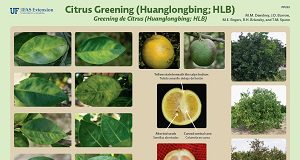 This document is a two-page illustrated identification sheet for Citrus Greening that includes a comparison chart for Citrus Greening, Blight and Tristeza.
This document is a two-page illustrated identification sheet for Citrus Greening that includes a comparison chart for Citrus Greening, Blight and Tristeza.
http://edis.ifas.ufl.edu/pp263
Florida Vegetable Gardening Guide — Revised!
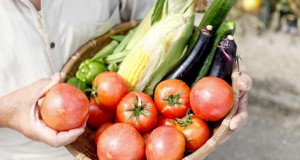
Vegetable gardening offers fresh air, sunshine, exercise, enjoyment, mental therapy, nutritious fresh vegetables, and economic savings, as well as many other benefits. With some attention to planning and planting, vegetables can be grown year-round in Florida. This 11-page guide provides recommendations primarily for traditional home gardens, including planning your garden and choosing crops, soil preparation and maintenance, fertilization, irrigation, pest management, and other gardening know-how. Includes a planting guide, table of suggested varieties, and table of products labeled for insect and mite management in home vegetable gardens. Written by Sydney Park Brown, Danielle Treadwell, J. M. Stephens, and Susan Webb, and published by the Environmental Horticulture Department.
http://edis.ifas.ufl.edu/vh021
Cooking with Fresh Herbs
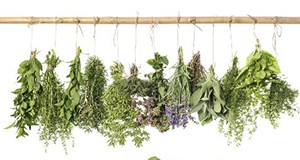 People worldwide are becoming more adventurous when cooking with fresh herbs. If you are just starting to use fresh herbs in your cooking or need a refresher, these tips for washing, storing, and cooking with herbs will lead you in the right direction. This 8-page fact sheet discusses the history of herbs, how to buy them fresh, how to wash and store them, dried herb blends, common herb and food combinations, and several recipes using herbs. Written by Emily Minton and Martha Maddox and published by the Department of Family, Youth, and Community Sciences, October 2015. (Photo credit: Credit: LiliGraphie/iStock/Thinkstock.com)
People worldwide are becoming more adventurous when cooking with fresh herbs. If you are just starting to use fresh herbs in your cooking or need a refresher, these tips for washing, storing, and cooking with herbs will lead you in the right direction. This 8-page fact sheet discusses the history of herbs, how to buy them fresh, how to wash and store them, dried herb blends, common herb and food combinations, and several recipes using herbs. Written by Emily Minton and Martha Maddox and published by the Department of Family, Youth, and Community Sciences, October 2015. (Photo credit: Credit: LiliGraphie/iStock/Thinkstock.com)
http://edis.ifas.ufl.edu/fy1209
Flatwoods Citrus Best Management Practice: Riser-Board Structures
 Water discharge structures are used to control water table levels and surface water levels in drainage and irrigation ditches within flatwoods citrus groves. The type of structure selected can significantly influence the quality of water discharged. With flashboard risers, water is forced to flow over the top board. This flow path creates a low current area toward the bottom, which facilitates the deposition of sediments and their accompanying nutrients or pesticides, essentially removing them from the discharges. Conversely, screw-gate structures do not create this dead-current zone. Since they open from the bottom, sediments are swept out along with the discharge water. Written by Chris Wilson, Liberta Scotto, Brian Boman, and Tim Gaver. Original publication date February 2002. Revised April 2012 and August 2015.
Water discharge structures are used to control water table levels and surface water levels in drainage and irrigation ditches within flatwoods citrus groves. The type of structure selected can significantly influence the quality of water discharged. With flashboard risers, water is forced to flow over the top board. This flow path creates a low current area toward the bottom, which facilitates the deposition of sediments and their accompanying nutrients or pesticides, essentially removing them from the discharges. Conversely, screw-gate structures do not create this dead-current zone. Since they open from the bottom, sediments are swept out along with the discharge water. Written by Chris Wilson, Liberta Scotto, Brian Boman, and Tim Gaver. Original publication date February 2002. Revised April 2012 and August 2015.
https://edis.ifas.ufl.edu/ss409
Flatwoods Citrus Best Management Practice: Soil Stabilization

This best management practice describes stabilization practices for erosion-prone soils within flatwoods citrus groves. Significant amounts of soil may be deposited in drainage ditches and canals because of the erosion of grove soils. These deposited soils reduce the capacity for holding and transporting water. Plus, very small soil fractions may be suspended in discharge water then settle out in slower flowing areas and destroy submerged aquatic habitats, resulting in the loss of fish, invertebrate, and plant species important for healthy ecosystems. Fortunately, a variety of slope stabilization methods are available. This publication describes considerations for using plants for stabilization, or mulch-like materials. Written by P. Chris Wilson, Liberta Scotto, Brian Boman, and Tim Gaver. Original publication date March 2002. Revised April 2012 and August 2014. Reviewed August 2015.
http://edis.ifas.ufl.edu/ss408
Clavate Tortoise Beetle, Plagiometriona clavata (Fabricius)

Plagiometriona clavata (Fabricius) is common and can be recognized easily by its general form and appearance. Written for Featured Creatures Collection by Robert E. Woodruff. Original publication date December 2006, revised August 2015. (Photo Credit: David Cappaert, www.forestryimages.org)
http://edis.ifas.ufl.edu/in710

